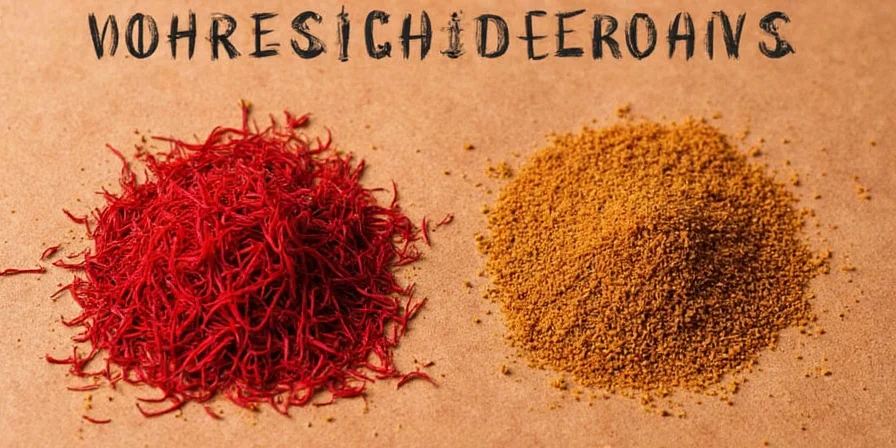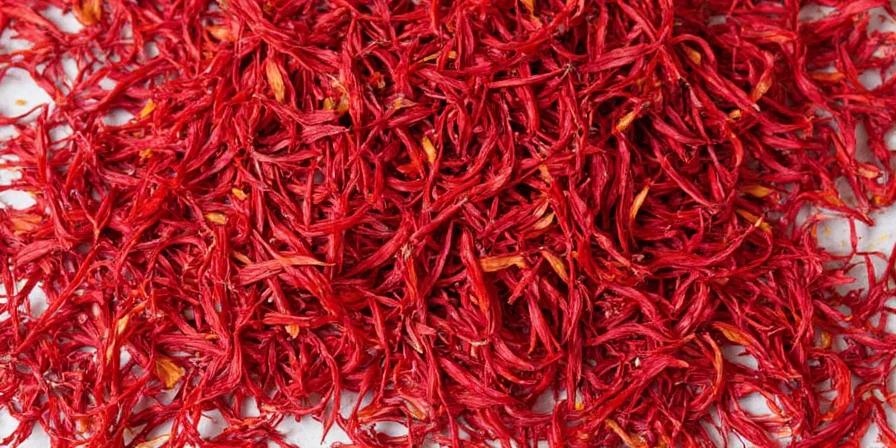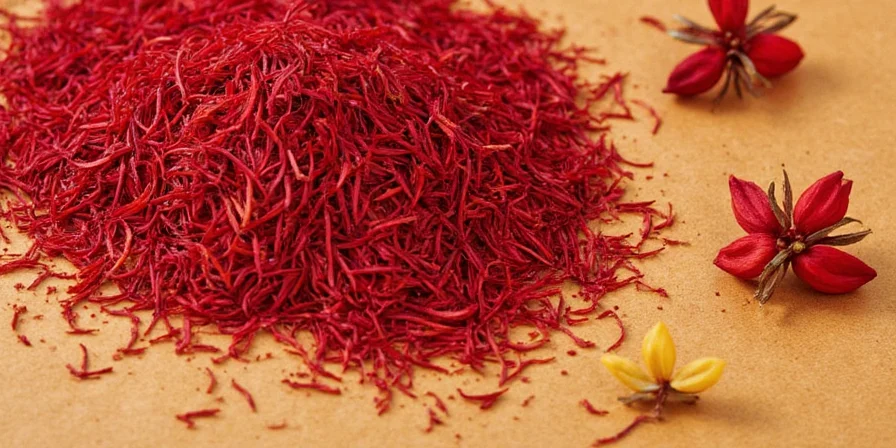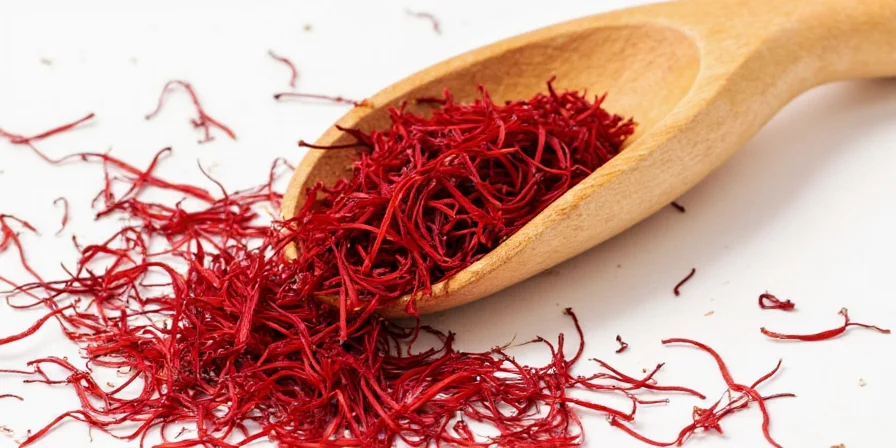Where Does Saffron Come From? A Spice Detective’s Guide to the World’s Most Precious Flavor
Table of Contents
- Introduction: The Golden Enigma of Saffron
- A Botanical Breakdown: What Exactly is Saffron?
- The Global Geography of Saffron Production
- From Ancient Temples to Modern Kitchens: A Historical Journey
- Who’s the Real King of Saffron? Top Producing Countries Ranked
- How to Spot Real Gold in a Jar: Tips for Identifying Authentic Saffron
- Buying Like a Pro: Smart Shopping Tips for Saffron Lovers
- From Paella to Kulfi: Creative Ways to Use Saffron in Your Kitchen
- Conclusion: Follow the Golden Thread
Introduction: The Golden Enigma of Saffron

Saffron. Just saying the word feels luxurious, doesn’t it? Like whispering about silk robes or golden tiaras. But where exactly does this magical spice come from? Is it grown in some secret cave guarded by mythical creatures? Did it fall from the heavens on a chariot of sunbeams?
In reality, saffron comes from a flower — not just any flower, but one that produces threads so valuable they’re sometimes called “red gold.” In this article, we’ll take you on a journey from soil to spice jar and uncover the truth behind one of the world’s most legendary seasonings.
A Botanical Breakdown: What Exactly is Saffron?

Let’s start with the basics. Saffron is derived from the Crocus sativus flower — a pretty little purple plant that looks like something straight out of a fairytale garden.
Each bloom produces three tiny red stigmas, which are hand-harvested and dried to create the spice we know as saffron. These delicate threads are what give dishes their distinct golden hue and earthy flavor.
Fun fact: It takes roughly 75,000 flowers to produce just one pound of saffron. That’s why this spice costs more than its weight in gold!
The Global Geography of Saffron Production
While Crocus sativus can technically be grown anywhere with the right climate, there are certain regions that have mastered the art of cultivating and harvesting saffron over centuries.
Historically, saffron thrives in temperate climates with dry summers and cold winters. Let’s explore where the world’s best saffron actually comes from — and how geography plays a starring role.
From Ancient Temples to Modern Kitchens: A Historical Journey

Saffron has been around since ancient times — literally. Ancient Egyptians used it for everything from medicine to perfumes. In Greece, it was believed to be the tears of the gods. During medieval Europe, it was considered a luxury reserved for royalty.
As trade routes expanded, so did saffron’s reach. Today, it’s a key ingredient in cuisines ranging from Spanish paella to Indian biryani. Its history is rich, and its legacy continues to evolve with every new generation of chefs and home cooks alike.
Who’s the Real King of Saffron? Top Producing Countries Ranked
When it comes to quality and quantity, not all countries are created equal. Here’s a breakdown of the top producers shaping the global saffron market:
| Rank | Country | Annual Production (metric tons) | Notable Traits |
|---|---|---|---|
| 1 | Iran | 300-400 | High-quality threads, strong aroma, dominates global exports |
| 2 | India (Kashmir) | 8-10 | Rich color, delicate taste, premium pricing |
| 3 | Spain | 3-5 | Well-known brand 'La Mancha', commonly used in paella |
| 4 | Greece (Krokos) | 2-3 | PDO-certified saffron, high crocin content |
| 5 | Italy (Abruzzo) | 1-2 | Distinctive floral notes, limited production |
While Iran may dominate production, Kashmiri and Spanish saffron often command higher prices due to unique growing conditions and branding.
How to Spot Real Gold in a Jar: Tips for Identifying Authentic Saffron

With such a high price tag, counterfeit saffron is sadly common. Here’s how to tell the real deal from fake impostors:
- Color Test: Real saffron threads should range from deep red to mahogany with orange tips.
- Smell Test: Genuine saffron has an earthy, slightly sweet fragrance — not overpoweringly pungent.
- Water Test: Soak a few threads in warm water. True saffron will release a golden hue without turning the water cloudy.
- Label Check: Look for country of origin, grade (e.g., ‘Coupe’ or ‘Mancha’), and packaging details.
- Price Check: If it seems too cheap, it probably isn’t real. Be skeptical of $5 bottles online.
Buying Like a Pro: Smart Shopping Tips for Saffron Lovers
If you're ready to invest in this precious spice, here are some insider shopping hacks to make sure you get the most value:
- Buy Whole Threads, Not Powder: Powdered saffron is easier to adulterate and loses potency faster.
- Check for Certifications: Look for IGP, PDO, or ISO certifications if available.
- Ask Questions: Talk to sellers or read reviews. Are they transparent about sourcing?
- Store Smart: Keep saffron in a cool, dark place in an airtight container. Avoid moisture at all costs.
- Use Sparingly: A little goes a long way! Start with a pinch and adjust as needed.
From Paella to Kulfi: Creative Ways to Use Saffron in Your Kitchen

Saffron might sound fancy, but it's incredibly versatile in the kitchen. Here are some delicious ways to bring that golden touch into your meals:
- Paella Valenciana: The iconic Spanish dish wouldn’t shine without saffron’s vibrant color and depth.
- Biryani & Pulao: Indian chefs use saffron-infused milk to elevate rice dishes with fragrance and flair.
- Risotto alla Milanese: Creamy Italian rice gets its signature yellow hue and subtle aroma from saffron.
- Kheer/Kulfi: Desserts infused with saffron add a royal touch to celebrations across South Asia.
- Modern Cocktails: Bartenders love using saffron tinctures to infuse drinks with exotic flavors and colors.
Conclusion: Follow the Golden Thread
Saffron’s journey — from delicate petals to gourmet kitchens — is nothing short of magical. Whether you're cooking a traditional feast or experimenting with fusion cuisine, knowing where saffron comes from helps you appreciate every golden thread.
So next time you open that tiny jar, remember: you're holding centuries of tradition, a touch of luxury, and a whole lot of flavor. Now go forth and cook like the spice royalty you are!











 浙公网安备
33010002000092号
浙公网安备
33010002000092号 浙B2-20120091-4
浙B2-20120091-4